
Dignitaries sorting bones in a Klong box during the Kut ceremony
Po Ina Nagar Temple - a mother worship religion
The worship of Po Ina Nagar is a form of mother worship of the Cham people. The goddess taught the Cham people the professions of rice cultivation, weaving, pottery making, seafaring, and exchange and trade. In the past, the Cham people worshiped the goddess Po Ina Nagar at the Po Nagar Tower in Nha Trang city, Khanh Hoa province. Due to historical events, the Cham people invited her to worship at the Hamu Ram plain in Mong Nhuan village, Phuoc Huu commune. In 1954, the Cham people continued to move the temple to the Hamu Tanran field, Huu Duc village, Phuoc Huu commune, Ninh Phuoc district, Ninh Thuan province until today.
The architecture of Po Ina Nagar temple is similar to that of communal houses in Vietnamese villages. The roof is decorated with two dragons fighting for a pearl, and a protective wall is built around the temple, with the main gate opening to the East. Overall, Po Ina Nagar temple consists of three main worship spaces: the eastern room houses the statue of Po Bia Apakal, the central room is used as a place to prepare offerings and for dignitaries to rest, and the western room houses two statues of Po Bia Dara and Po Bia Tâh.

Goddesses worshiped at Po Ina Nagar temple
In addition, there is a small house in the South used to worship the fire god on the occasion of the Yuer Yang Festival. It can be said that the architecture of Po Ina Nagar temple is influenced by the architectural thinking of building communal houses of the Vietnamese, showing the cultural exchange between the two communities but still preserving the traditional construction techniques of the Cham people in the arrangement of worshiping places and the system of truss structures.
Although it is only a small temple managed by the village community, every year at Po Ina Nagar temple, Cham people organize Yuer Yang, Kate, Cambur festivals and open the tower door like other tower temples in Ninh Thuan. In particular, at Po Ina Nagar temple, there is a sea turtle sacrifice ceremony (sea turtle) organized periodically by the clans. The worshiping ceremonies at Po Ina Nagar temple are performed by dignitaries Po Adhia, Mrs. Pajau, Mr. Kadhar and Mr. Camanei who perform the temple opening ceremonies, bathing the statue, dressing in costumes, offering offerings and singing hymns.

Po Klong Halau stone citadel relic
On the occasion of the Kate Festival, the Raglay community from the mountainous village of Njak (Gia), Phuoc Ha commune, Thuan Nam district, carries the costumes of goddess Po Ina Nagar and hands them over to the Cham people to perform the ceremony. The Raglay community participates in the ceremony of beating gongs and blowing gourds, creating a unique musical performance space. The Cham people have a saying “ Cham sa-ai Raglai adei ”, meaning that the Cham are the eldest sister, and the Raglay are the youngest sister, following the matriarchal system, so they have the right to inherit the heritage and preserve the costumes of goddess Po Ina Nagar. The Kate Festival is an occasion to strengthen the relationship between the two close-knit Cham and Raglay communities.
Po Klong Halau stone citadel relic
Po Klong Halau (1579-1603) ascended the throne in the year of the Rabbit, abdicated in the year of the Rabbit, reigned for 24 years, and established his capital in Bal Pangdurang near Chung My village, Phan Rang. In the early 18th century, Bal Pangdurang moved to Phan Ri in Bal Canar, Tinh My village, Phan Thanh commune, Bac Binh district, Binh Thuan province. The Po Klong Halau relic was built with a surrounding stone wall system. The wall system consists of 3 layers from the entrance, the first layer is the largest, the second layer is smaller, and the third layer has Kut stone as a place of worship.

Offerings at the temple of goddess Po Ina nagar
At the Po Klong Halau relic site, there are 3 Kut rocks with 4-petal flower-shaped carvings, stylized crown-shaped carvings, and 3 round cylindrical rocks without carvings or sculptures. During the restoration process, the Kut rocks were re-arranged and arranged in a horizontal row together. Currently, no clan living in Huu Duc village claims to be descendants of the Po Klong Halau clan. However, every year on the occasion of the Kate Festival, after finishing the offerings at the tower temple, the Cham community comes to offer offerings at the Po Klong Halau temple.
Unlike the Kut of the clan, which is directly managed and practiced by the clan. The Kut Po Klong Halau relic area belongs to the Huu Duc village community, so when there is a need to practice the belief, families and clans are allowed to come and pray for blessings. In folk propaganda, Kut is very sacred, those who come to visit Kut must be careful with their words, not litter or take the stones used to build the wall to use as Ong Tao.

Kut stone row at Po Klong Halau relic
From the carvings and the size of the Kut stone, it can be said that Po Klong Halau belongs to a noble family with a high position in society. Local people have not yet determined when Kut was built and established, and where the descendants of the Po Klong Halau family migrated. For a long time, Kut Po Klong Halau was deserted, covered with dense cactus and wild plants, no one dared to enter the relic site without permission. Through many renovations, building a protective wall, pouring a concrete floor and erecting a roof to protect from the sun and rain at the location of the Kut stone, the relic site is clean like a park with trees and lights.
The Kut Po Klong Halau stone temple relic is the center of religious activities of the Cham community, open regularly for people who want to practice worship, guided by the dignitary Mr. Kadhar. The offerings include fruits, cakes, betel and areca nuts, egg wine, a pair of chickens or a goat depending on the family. It can be said that Po Klong Halau is like the village's god. The place where people come to satisfy their spiritual and cultural practice needs.

Klong boxes are sorted and ready to import Kut
The Cham people's custom of worshiping Kut stone
The Cham people follow a matriarchal system, and the daughter has the right to marry a husband. After the cremation ceremony, the Cham people keep 9 pieces of forehead bones shaped like coins in a metal box, called Klong in Cham. On the day of Kut, the wife's family has the obligation to bring the Klong box back to the husband's family to conduct Kut according to the matriarchal lineage. The Cham people have a saying "Daok hadiep ngap mbeng ka urang tel matai ba talang ka amaik" . (Meaning: While alive, create wealth for strangers, when you die, bring the bones back to your mother). The above saying reflects the true nature of the matriarchal system of the Cham people, children belong to the mother's lineage. During their lifetime, they are free to live anywhere, but when they die, they must return to the cemetery of their mother's lineage.

On the way to Kut family cemetery
The common feature of the Cham Kut is that they are all built to the east of the village, near a water source. The name of the Kut is often taken from a place name, a tree name, the name of the oldest woman in the clan or the name of the person who organized the establishment of the Kut. For example: Kut gep Hamu Makia (Thi Tree Clan), Kut Amil Apuei (Fire Tamarind Tree)... Clans that are of warrior, noble or mandarin lineage have Kut stones carved with 4-petal patterns and crown-shaped carvings. As for common clans, they only have plain stone slabs without decorative carvings.
The Kut stones of the Cham people usually have odd numbers of 3-5-7-9-11. The number of Kut stones depends on the clan that established them. However, the stone slabs are arranged in a certain order. The eastern row of stones is for men, the western row of stones is for women. The stone slab in the middle is not buried. Depending on the state of death, good or bad, people with social status, dignitaries, officials, commoners or people with disabilities will be planned and selected to be buried with Kut stones. The Cham people are very careful in burying Kut, if they do not comply with the above convention, their ancestors will punish their descendants. The dignitaries who carry out the Kut are also very careful in classifying and grouping the standard Klong boxes according to regulations.
Experiencing community tourism in Huu Duc Cham village, visitors are free to walk on the fields, watch the river of the countryside. Discover interesting things about cuisine, music, customs and learn about the cultural and historical heritage of the Cham village.

Kut stone with carved patterns of Hamu Makia clan

Reading the sutras at the Kut ceremony
Source: https://baodantoc.vn/di-san-van-hoa-lang-cham-huu-duc-1748261134595.htm


![[Photo] National Assembly Chairman Tran Thanh Man attends the VinFuture 2025 Award Ceremony](/_next/image?url=https%3A%2F%2Fvphoto.vietnam.vn%2Fthumb%2F1200x675%2Fvietnam%2Fresource%2FIMAGE%2F2025%2F12%2F05%2F1764951162416_2628509768338816493-6995-jpg.webp&w=3840&q=75)



![[Photo] 60th Anniversary of the Founding of the Vietnam Association of Photographic Artists](/_next/image?url=https%3A%2F%2Fvphoto.vietnam.vn%2Fthumb%2F1200x675%2Fvietnam%2Fresource%2FIMAGE%2F2025%2F12%2F05%2F1764935864512_a1-bnd-0841-9740-jpg.webp&w=3840&q=75)

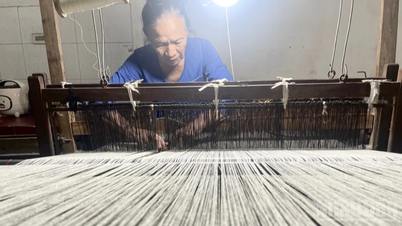

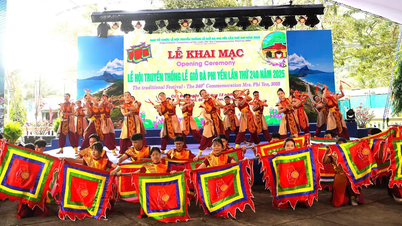

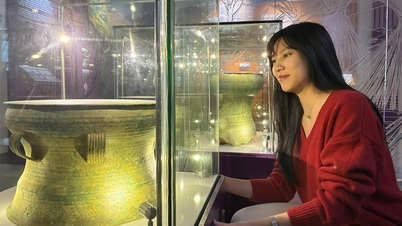








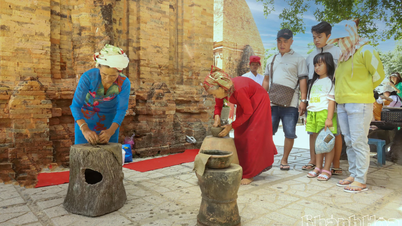



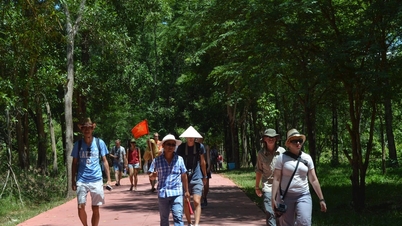

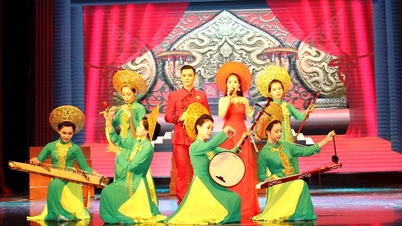
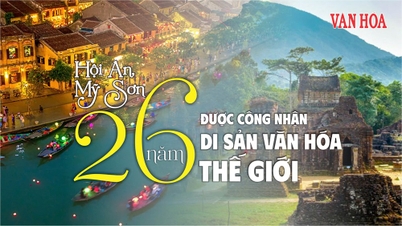






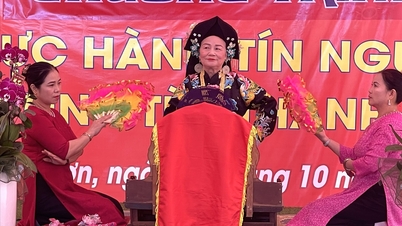
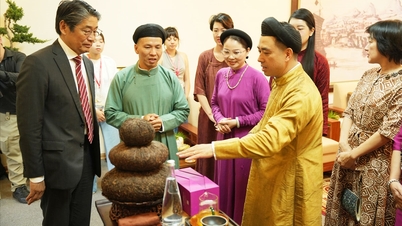

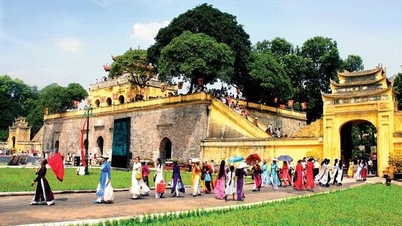












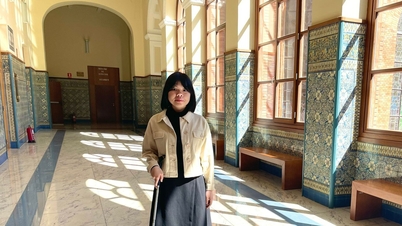




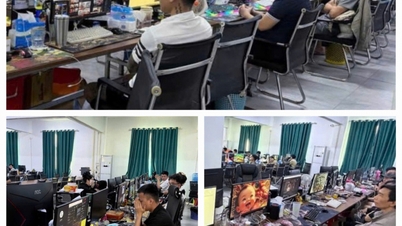

























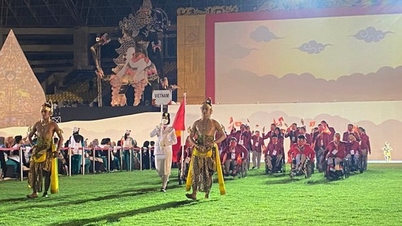


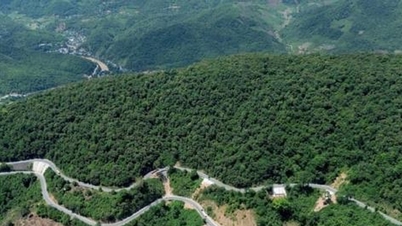


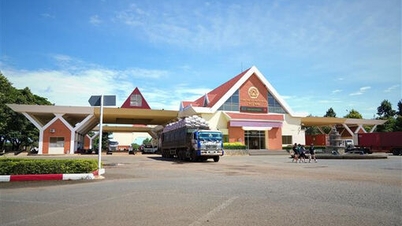

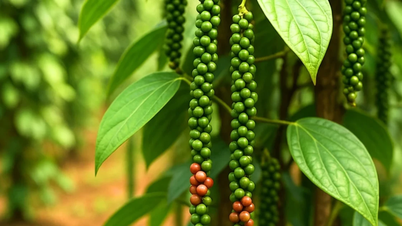

















Comment (0)